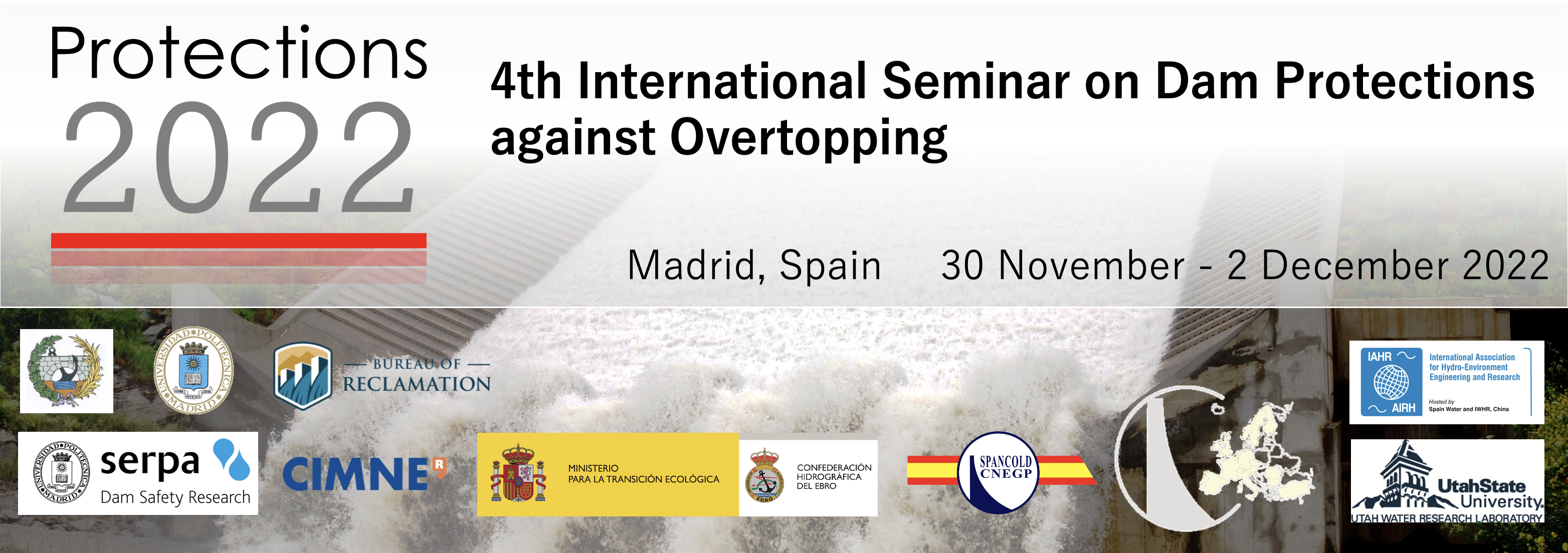Location
Madrid, Spain
Session
Session 5
Start Date
12-1-2022 2:35 PM
Description
Grass covers offer a level of erosion protection against hydrodynamic loads induced by overtopping waves. The development of an accurate failure criterion for grass covers has been hampered by the lack of understanding of how grass fails. Methods have been developed to predict the hydrodynamic loads that act on the levee surface and consequently are transmitted to the porous grass cover and subsoil. However, it is unknown how these hydrodynamic surface loads on the soil are distributed amongst the pore water pressures and effective stresses, thereby offering a significant challenge for engineers to simulate the transmission of stresses into the porous grass cover. The analysis of the response of porous media is limited to either a fully drained analysis or an undrained analysis, neither of which offer sufficient insights into the time-dependent nature of the erosion resistance of grass covers. Little is thereby known on how grass responds to hydrodynamic loads and when it will fail. Here we outline the development of a new 2D continuum based model for porous media, which only requires the total stresses and shear stresses at the levee surface to be determined by the user. Based on this information the model determines how the distribution of the surface stresses into pore water pressures and effective stresses changes with time. The model is thereby able to resolve any time dependent and spatially distributed surface load. The solution to the model is constructed using separation of variables, which has led to analytical solutions of the constitutive equations for porous media and is consequently fast to run. The new modelling method would allow users to rapidly evaluate the erosion resistance of grass based on measurements of the turf layer characteristics. The development of the model opens up the possibility to perform fully time dependent calculations on the behavior of porous media.
Creative Commons License

This work is licensed under a Creative Commons Attribution-Noncommercial-No Derivative Works 4.0 License.
Included in
Methodology for Calculating the Response of Porous Media for Evaluating Grass Response to Overtopping Loads
Madrid, Spain
Grass covers offer a level of erosion protection against hydrodynamic loads induced by overtopping waves. The development of an accurate failure criterion for grass covers has been hampered by the lack of understanding of how grass fails. Methods have been developed to predict the hydrodynamic loads that act on the levee surface and consequently are transmitted to the porous grass cover and subsoil. However, it is unknown how these hydrodynamic surface loads on the soil are distributed amongst the pore water pressures and effective stresses, thereby offering a significant challenge for engineers to simulate the transmission of stresses into the porous grass cover. The analysis of the response of porous media is limited to either a fully drained analysis or an undrained analysis, neither of which offer sufficient insights into the time-dependent nature of the erosion resistance of grass covers. Little is thereby known on how grass responds to hydrodynamic loads and when it will fail. Here we outline the development of a new 2D continuum based model for porous media, which only requires the total stresses and shear stresses at the levee surface to be determined by the user. Based on this information the model determines how the distribution of the surface stresses into pore water pressures and effective stresses changes with time. The model is thereby able to resolve any time dependent and spatially distributed surface load. The solution to the model is constructed using separation of variables, which has led to analytical solutions of the constitutive equations for porous media and is consequently fast to run. The new modelling method would allow users to rapidly evaluate the erosion resistance of grass based on measurements of the turf layer characteristics. The development of the model opens up the possibility to perform fully time dependent calculations on the behavior of porous media.


